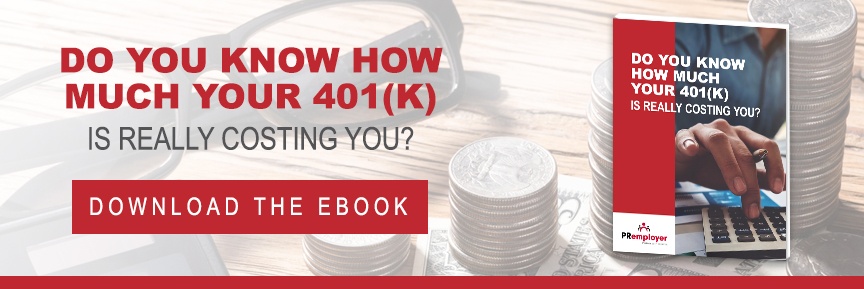
A 401k is one of the most popular retirement benefits offered by companies. It's a company-sponsored retirement account that employees can contribute pre-tax and post-tax income while getting a match from their employer. Businesses that offer employees 401k retirement plans have a competitive advantage that helps them attract and retain top talent in their industry. If you're not offering a 401k to your employees, you're missing out.
Administering a 401k, however, is not for the faint of heart. There are legal hurdles and filing requirements, which is why it's best to partner with an experienced 401k benefits provider or PEO to administer your retirement plan and ensure your employees get the most benefit.
The Benefits of a 401k Plan
Employees want to save for their retirement. One of the best ways to do that is through a 401k retirement plan, which workers can only access if your company offers the benefit. Having a 401k as part of your overall benefits package can give your company a competitive advantage while getting tax benefits.
Because of the benefits offered to employees through 401k plans, workers look for this benefit when searching for a new job. To help you recruit quality workers, having a 401k gives your company a great head start from your competition.
Choosing the Plan for Your Business
Knowing the benefits a 401k plan provides to your employees and your company is a great start. But once you decide to implement a plan, you could become overwhelmed with options. It's essential to research third-party providers who can help you choose the right plan for your business and administer the plan for you.
Because 401k retirement plans require tight integration with payroll, you may want to consider a Professional Employer Organization (PEO) to administer your 401k. A PEO handles your company's payroll, making it easier for deductions to be completed and transferred into your employees' retirement accounts. A PEO can also help you choose the right 401k plan for your business.
Traditional 401k
A traditional 401k is an employer-sponsored retirement plan that gives employees a choice of investment options for pre-tax money. When employees take the money out during retirement, that's when they pay taxes. While your company is not required to make a company match, it can be an excellent benefit to add. Any match your company makes will go into your employee's traditional 401k retirement plan.
Traditional 401k retirement plans also help reduce the employee's present income tax burden. Let's say you have an employee making $50,000 per year, and they contribute $8000 to a traditional 401k. Because the retirement contribution is pre-tax, the employee's taxable income for the year drops to $42,000, reducing their overall tax burden for the year.
Roth 401k
When your company sets up a 401k retirement plan, the traditional 401k is what your plan administrator sets up. But you can also add a Roth 401k option too. A Roth 401k is an employer-sponsored retirement plan that gets funded with your employees' post-tax dollars. That means that employees pay tax on the money, letting it grow tax-free and taking retirement distributions tax-free.
Your company cannot put any money into an employee's Roth 401k. Only employee contributions can go to a Roth, and many employees like to split their contributions to get some tax benefits now and some in retirement.
Automatic Enrollment Plan
An automatic enrollment plan is a process through which you fund your 401k retirement plans. It automatically deducts the elective deferrals from an employee's paycheck and deposits them into their retirement account.
Safe Harbor Plan
A safe harbor plan requires adherence to the Internal Revenue Service (IRS) non-discrimination testing. It's not a separate 401k plan, but instead, a type of employer contribution added to a plan to pass the compliance testing by the IRS.
The Cost of a 401k Plan
A 401k retirement plan comes with certain costs. You will probably have to pay to have the plan set up and pay regular maintenance costs. Your company can absorb these costs, or you can distribute them out among the plan participants.
401ks also have benchmarking requirements. Benchmarking is the process of reviewing and potentially updating your retirement plan based on what you offer today and whether that's appropriate. Violations of these requirements could lead to non-compliance fines, one of the many protections you get with a PEO.
Partner with an Experienced Benefits Provider
When employees look for a new job or evaluate whether to stay with their current employer, an employee benefits package plays an outsize role. When your company offers a 401k retirement plan, it gives you that competitive advantage to attract and retain top talent in your industry.
One of the best ways to ensure a smooth 401k retirement plan process and avoid costly compliance violations is to partner with a PEO. Your PEO can help you find the right plan, administer it for you, and ensure payroll deductions are accurate and timely.

